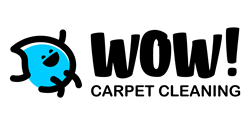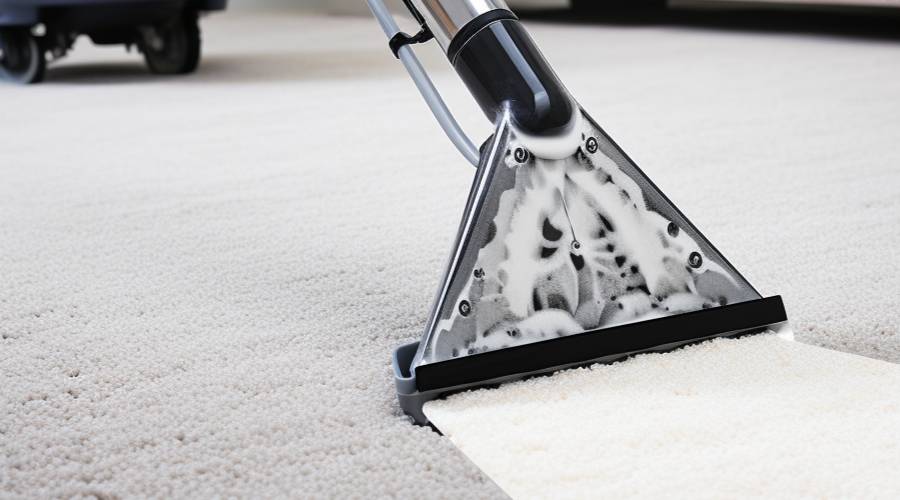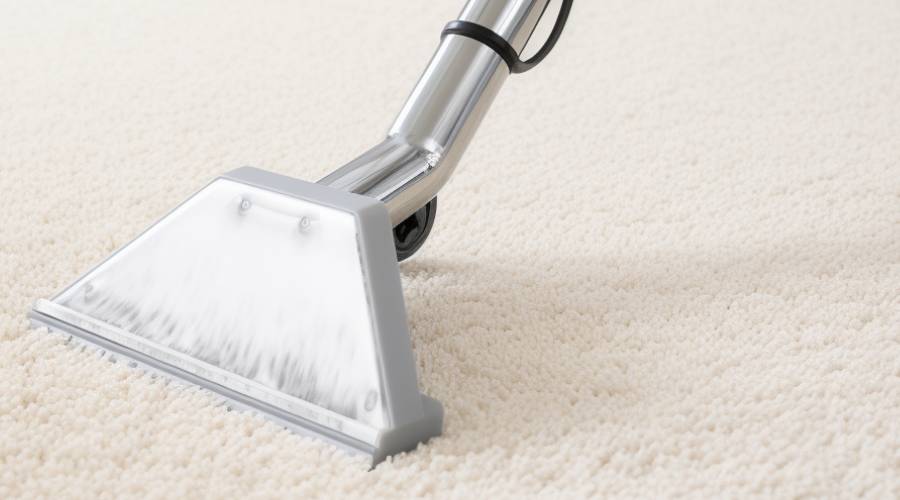Which Carpet Cleaning Method Should You Choose
How to Make the Right Choice to Clean Carpets
Regular carpet cleaning is super important, not just for appearances, but for the health of your home too. But which carpet cleaning method should you choose given the many options out there? It can be tough to know which one to choose. Don’t worry. We’ve got you covered. In this guide, we’ll break down the top ways carpeting is cleaned and help you figure out which one is right for you.
Hot Water Extraction
Steam cleaning, also known as hot water extraction, is one of the most popular and effective methods of deep cleaning carpets. This method involves using a specialised machine that sprays hot water and cleaning solution deep into the carpet fibres and then extracts the moisture and dirt with a powerful vacuum.
How it Works
- Pre-treatment: First, a pre-treatment solution is applied to help break down tough stains and loosen grime.
- Hot water injection: The truck-mounted unit then injects hot water and cleaners into the carpeting under high pressure, penetrating deep into the fibres.
- Agitation: The machine agitates the fibres, helping to loosen and lift gunk and stains.
- Extraction: Finally, the machine uses a powerful vacuum to extract the moisture and any chemical residue, leaving your floors clean and damp.
Drying Time
One of the main drawbacks of using steam is that the washed floor dries longer. Because this method uses a lot of water, your carpets can take anywhere from 6 to 12 hours to dry completely, depending on factors like humidity and airflow. During this time, it’s best to avoid walking on the floor as much as possible to prevent re-soiling and speed up the drying process.
Best For
When you need a serious, deep clean. It is best for heavily soiled or stained carpeting. It’s also a good choice for homes with allergies or sensitivities, as the hot water can help kill dust mites and other allergens. However, it’s important to note that this method may not be suitable for all carpet types, such as delicate or antique fabrics.
Pros:
- Provides a deep, thorough clean
- Great for removing stubborn stains
- Results can last longer
Cons:
- Takes longer for carpeted floors to dry
- If not done properly, can lead to overwetting
Dry Carpet Cleaning
Dry carpet cleaning or surface cleaning is a method that uses little to no water, making it a good choice for those who need a quicker turnaround time or have moisture concerns. There are a few different types of dry cleaning, including dry compound and encapsulation.
How it Works (Dry Compound)
- Spreading the compound: A special absorbent compound, often in the form of a powder or tiny sponges, is spread evenly over the surface.
- Brushing: The compound is then brushed into the carpet fibres using a machine with counter-rotating brushes. This helps the compound absorb dirty particles.
- Vacuuming: After letting the compound sit for a set amount of time (usually around 30 minutes), it’s thoroughly vacuumed up, taking all contaminants with it.
How it Works (Encapsulation)
- Apply the encapsulant: Spray a special polymer solution onto the carpet. This solution will encapsulate debris and stains.
- Agitate the carpet: Agitate the floor cover with a machine or brush to work the encapsulant into the fibres and loosen the dirt.
- Let it dry and vacuum: Allow the encapsulant to dry, forming crystals around the dirty particles. Vacuum up these crystals, along with the grime, to leave the carpet clean.
Drying Time
One of the main advantages of carpet dry cleaning is that it dries quickly. Because little to no water is used, floors are usually dry and ready to walk on almost immediately or within an hour. This makes it a convenient option for businesses or households that can’t afford a lot of downtime.
Best For
Lightly to moderately soiled carpets that need a quick clean. It’s great when you need a quicker turnaround time or have moisture concerns. This method is a good choice for delicate or antique carpets that may not be able to withstand the moisture of steam extraction. However, it’s important to note that this approach is not as thorough as steam cleaning, and some residue may be left behind.
Pros:
- Carpets dry much faster
- Lower risk of mold and mildew growth
Cons:
- Doesn’t provide as deep of a clean as steam extraction
- Some residue may be left behind
DIY Carpet Cleaning
Now, let’s talk about the do-it-yourself approach. While professional cleaning is often the best choice, there are times when tackling the job yourself can be a good option.
Pros of DIY Carpet Cleaning:
- Cost savings: Renting a carpet cleaning machine or buying your own can be more affordable than hiring a professional, especially if you have a smaller area to clean.
- Flexibility: When you do it yourself, you can clean your carpets on your own schedule, without having to work around a professional’s availability.
- Control: You have complete control over the process, from the products you use to the hours you spend in each area.
Cons of DIY Carpet Cleaning:
- Time and effort: Cleaning your carpets yourself can be a time-consuming and physically demanding task, especially if you have a large area to cover.
- Results may vary: Without the professional equipment and expertise, your results may not be as thorough or long-lasting as expert cleaners.
- Risk of damage: If you don’t use the right techniques or products, you could end up damaging your carpets or leaving them too wet, which can lead to mould and mildew growth.
Best For
- Small areas: If you only need to clean a small room or a few spots, doing it yourself can be a quick and easy solution.
- Light soil: DIY approach is sufficient for floors that are lightly soiled or stained
- Budget constraints: If you’re on a tight budget and can’t afford professional cleaning, doing it yourself can be a cost-effective alternative.
If you do decide to go the DIY route, be sure to follow these tips:
- Vacuum thoroughly beforehand to remove as much dirt and debris as possible.
- Choose a cleansing product that’s appropriate for your carpet type and follow the instructions carefully.
- Don’t overwet your carpets, and make sure they dry completely to avoid mould and mildew growth.
- Take your time and work in small sections to ensure you don’t miss any spots.
Remember, while DIY carpet cleaning can be a good option in some cases, it’s not always the best choice. Professional cleaners can help with heavily soiled and delicate floor covers. They have the knowledge, experience, and equipment to get your carpeted floors looking their best without the risk of damage.
How do you make the right choice?
Here are some things to keep in mind:
| Factor | What to Consider |
|---|---|
| Carpet Type | Some materials may require gentler methods |
| Soil Level | Heavily soiled carpets may need stronger cleaning |
| Drying Time | Longer drying times can be inconvenient |
| Eco-Friendliness | Some methods use harsher chemicals than others |
| Cost & Frequency | Consider your budget and schedule |
Professional vs. DIY
Another big question is whether to hire a professional carpet cleaning service or do it yourself.
Benefits of Professionals
- Knowledge, experience, and equipment to get your carpets looking their best
- Often get better results than DIY methods
- Saves you time and effort
When to Consider DIY
- Smaller area to clean
- Light soiling or staining
- You’re on a tight budget
If you do decide to hire a professional, make sure to choose a reputable company. Look for one with good reviews, certifications, and experience.
Common Problems
No matter which method you choose, there are some common issues you might face:
- Stubborn stains
- Lingering odors
- Carpet shrinkage
- Residue buildup
With the right approach and a little patience, you can overcome these challenges.
Maintaining Your Carpet’s Cleanliness
- Vacuum regularly (at least once a week)
- Address spills and stains immediately
- Use doormats to reduce dirt and debris tracked inside
- Apply a carpet protector after cleaning
The Bottom Line
At the end of the day, the best way to clean carpeted floors for you will depend on your unique situation. Take some time to consider your needs and preferences. Don’t be afraid to ask questions.
To recap, hot water extraction is great for a thorough clean, while dry methods are better for quick turnaround times. DIY has its share of pros and cons too. No matter which method you choose, regular cleaning is key to keeping your carpets looking and feeling fantastic. If you’re ever unsure, don’t hesitate to consult the experts. They can assess your carpets and help you determine the best approach.


